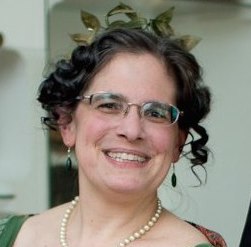English dance teacher William Lamb, in his Everybody's Guide to Ball-Room Dancing (London c1898-1900), published quite a few short dance sequences, most of limited interest to the average dancer. His American Schottische has more potential than most of these because it does not involve any reverse-line-of-dance movement and thus can be easily used as a simple variation when dancing a late 19th-century schottische.
Despite the name, there is nothing specifically American about this particular sequence, and it does not seem to have been taken up by other writers/compilers of dance manuals, even those who otherwise plagiarized Lamb quite freely. I suspect it was not a particular hit, perhaps never having any life in period outside the pages of Lamb's book. Nonetheless, I find it quite danceable and an interesting break from more typical schottische patterns.

